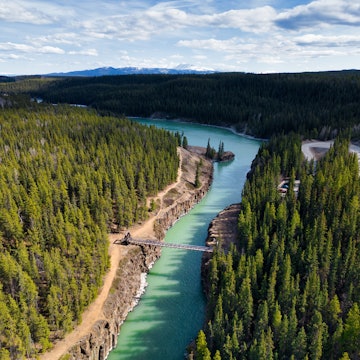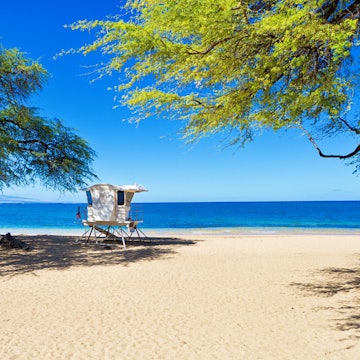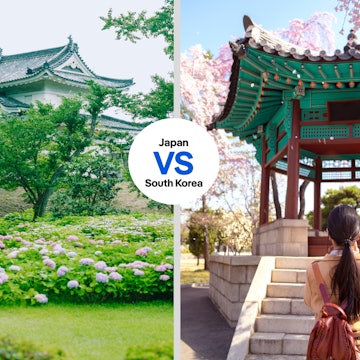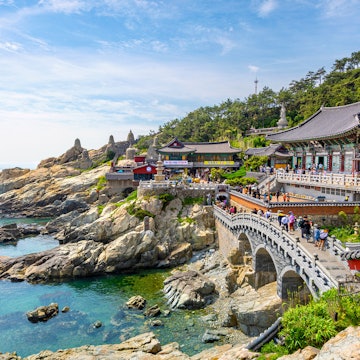

Whether you visit for the city buzz or the peace of the mountains, here are the top times to travel to South Korea © Jesse Morrow / Stocksy United
No matter where your good times happen – raucous nightclubs, ancient mountain hermitages, packed baseball stadiums, boundary-pushing museums and galleries – the chances are you'll find something to love in South Korea. There's no such thing as a bad time to visit, but some planning can take your trip to another level and create lasting memories.
With terrain that ranges from alpine peaks to subtropical beaches, South Korea goes through four distinct seasons, so knowing what to expect and how to prepare will go a long way toward getting the best out of your vacation. Here's everything you need to know about choosing the best time to visit.
March to May is the best time for mild weather and cherry blossoms
South Korea starts to shake off its winter frost in March, and for the next three months, you can expect mild, pleasant weather. By the time May rolls around, Seoul and other inland cities are already pushing for summer, with temperatures occasionally rising into the upper 20s Celsius. Naturally, folks start heading back outside – hikers start hiking, bikers start biking, and Korea's pro baseball and soccer leagues get underway.
The season's undeniable highlight, however, is the annual return of the cherry blossoms. They begin appearing on Jeju-do and along the south coast in mid-March and work their way up the peninsula, arriving in Seoul and Gangwon-do Province in early April. The end of March also brings the spectacle of the Jeju Fire Festival, which celebrates the creation of the island.
The weather in May can alternate between springlike and summery. Koreans celebrate Children's Day on May 5 and Parents' Day on May 8, and amusement parks and any sights that are vaguely kid-related fill up with families. Buddha's birthday in May is celebrated in Seoul by the Lotus Lantern Festival when brightly colored lanterns light the avenues and a parade of giant glowing floats proceeds through downtown.
The one thing that can put a damper on the season is hwangsa, yellow dust that gets blown off the deserts of Mongolia and northern China. It combines with local air pollution to occasionally create some pretty grim air conditions. When that happens, it's a good idea to wear a mask if you plan to spend significant amounts of time outdoors.

June to August is the best time to head to the mountains or the beach
Summer in South Korea is long, hot and rainy, particularly in the cities. The Korean rainy season – known as jangma – starts in the second half of June and can last through August. Temperatures stay stuck at close to 30ºC (86ºF), the humidity borders on the sadistic, and it rains just about every day.
Fortunately, no matter where you are in South Korea, there are beaches or mountains (or both) close at hand for a summer escape. Get out of the city and explore Seoraksan National Park, the surfing town Yangyang or far-flung islands such as Jumun-do, off the Incheon coast. Busan's famed Haeundae Beach is packed, while young Koreans and expats head to the west coast town of Boryeong to party at its Mud Festival. It would seem madness to travel to Daegu, Korea's hottest and most humid city, at this time of year, but they host a lively Korean-style fried chicken and beer festival, so think about it!
The downside of this plan, of course, is that accommodation rates in top vacation spots are higher at this time of year. For a cheaper escape, partake in the traditional Korean pastime of packing a picnic and spending the day in a gyegok, a mountain valley with a cool stream – a good starting point is Woo-ii Gyegok on Seoul's northeastern edge.
Summer also brings a wide range of festivals to the peninsula, and Korea's two major pro sports leagues – the Korea Baseball Organization and the K League soccer tournament – are in full swing. The traditional holiday of Dano typically falls in June, marked by one of Korea's most remarkable festivals – the UNESCO-listed Gangneung Danoje. During this multi-day event, celebrants conduct traditional shamanic rituals, perform mask dramas and pray to the mountain spirits. Visiting at this time offers a unique opportunity to get a glimpse of Korea's traditional shamanic practices.
Korea celebrates Liberation Day, commemorating the end of Japanese colonial rule, on August 15. The rain finally starts to let up, though the weather remains hot and humid. Alternative art has its moment, with the Seoul Fringe Festival taking place in the artsy university neighborhood of Hongdae, and both domestic and international rock, pop and metal acts turning up the volume at Incheon's Pentaport Rock Festival.

September to November is the best time for dry skies and golden ginkgoes
Visiting South Korea in the fall is pretty much a foolproof plan. Pleasant temperatures, crisp air and clear skies make this the ideal time for travel in the Land of the Morning Calm. And surprisingly, September is also South Korea's best beach month.
Summer's heat – but fortunately not its humidity – is still hanging around, but the crowds have seriously thinned out. Instead, locals head into the mountains to take in the fiery foliage, which starts to get really good in late October and early November. Expect crowded mountain trails at this busy time of year. This is also the season when the leaves of Seoul's innumerable ginkgo trees turn a stunning royal gold, making the sometimes drab cityscape undeniably beautiful.
Koreans call fall the "season for reading," and it's an ideal time to grab a book and spend some time enjoying the country's terrific cafe scene, hopping from one impeccably designed coffee shop to the next. In fact, October is probably the best month to visit South Korea. The Busan International Film Festival, Seoul Fashion Week, Andong Mask Dance Festival, Jarasum Jazz Festival and Gwangju World Kimchi Festival would all be reasons enough to buy a plane ticket, but to have all of them in the same month? And then you've got golden ginkgoes and fall foliage on top of all that? It doesn't get any better.
After October's frenzy of events, South Korea seems to exhale in November, and the calendar is relatively empty. Traditionally, November was a time when Koreans would prepare for the coming cold season, a vestige of which remains in the act of kimjang, preparing kimchi for the winter, which many families continue to perform together. For travelers, November's cool, clear weather creates great conditions for hiking in Korea's national parks and sipping a latte or local craft beer in a renovated hanok (traditional Korean house).
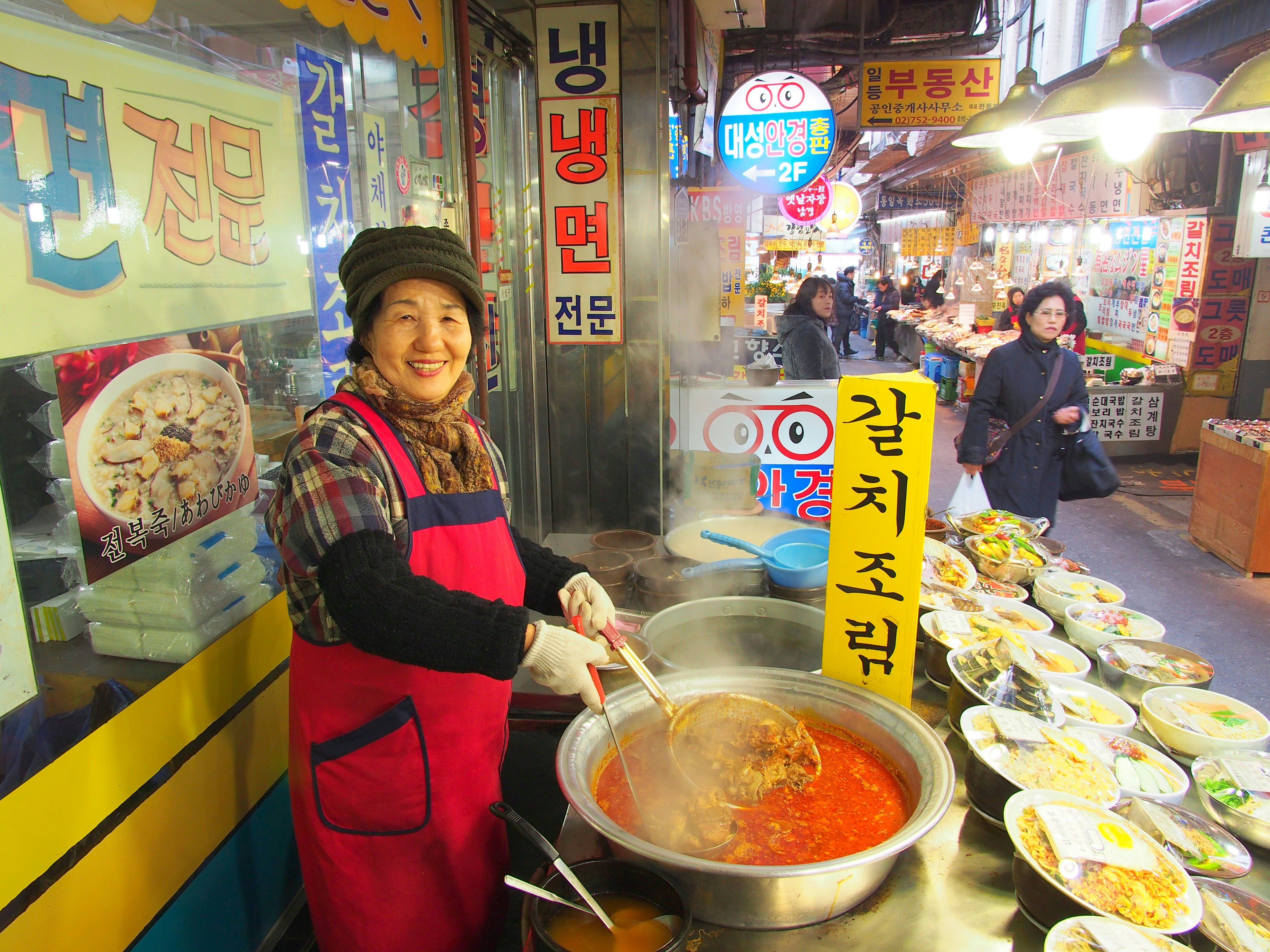
December to February is the best time for winter sports
Travel to Korea in winter, and you'll quickly learn the expression "Choo-uh!" – meaning "it's cold!" – which Koreans utter pretty much nonstop for three months. The country can be frigid at this time of year, especially up north and in the mountains. Expect daily highs to reach just a few degrees above freezing, with the south coast and Jeju-do being slightly warmer.
Mountainous Gangwon-do Province gets the most snow. The 2018 Winter Olympics brought international attention to Korea's winter sports venues, most of which are in Gangwon-do. While the crowds thin out elsewhere, as with any hub for recreation in this densely populated country, the ski slopes can get a lot more crowded than visitors from Europe or North America will be used to.
Winter brings celebrations for Christmas and New Year's, a holiday so nice Koreans celebrate it twice – once on January 1 and once on the Lunar New Year, when families gather and share traditional foods. Foodies will also be rewarded for making an off-season visit – winter is when Korea's hearty, soup-centric cuisine is at its most satisfying. Stay warm by getting lost in Seoul's many superb museums (such as the excellent National Museum of Modern and Contemporary Art) and tucking into buchimgae (fried pancakes) in a cozy pub with traditional ondol floor heating.
Most years, Seollal falls in February. This three-day affair is one of Korea's two major holidays, and many Koreans travel to their hometowns. If you think you'll need to travel on these dates, book tickets far in advance. If you're staying put, you'll find that major cities such as Seoul and Busan are uncommonly peaceful with so many folks out of town. Many businesses remain open, but not museums and palaces.









